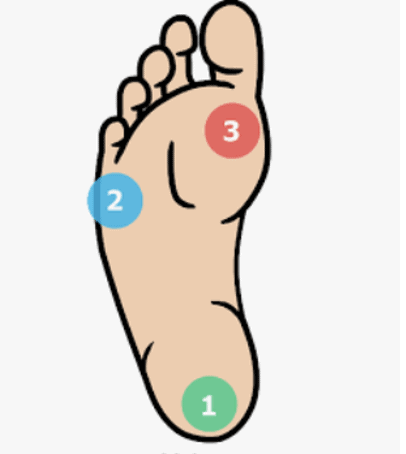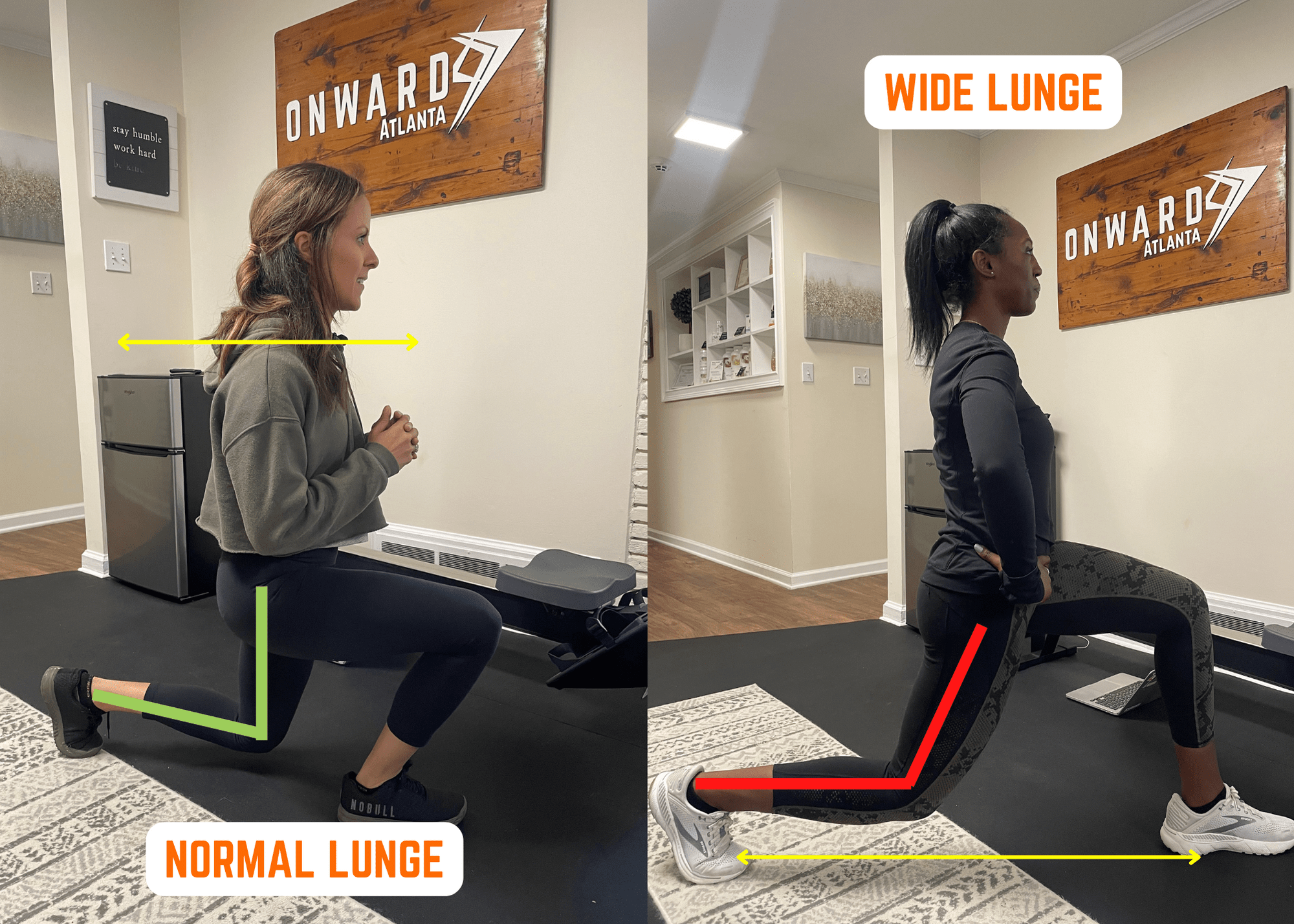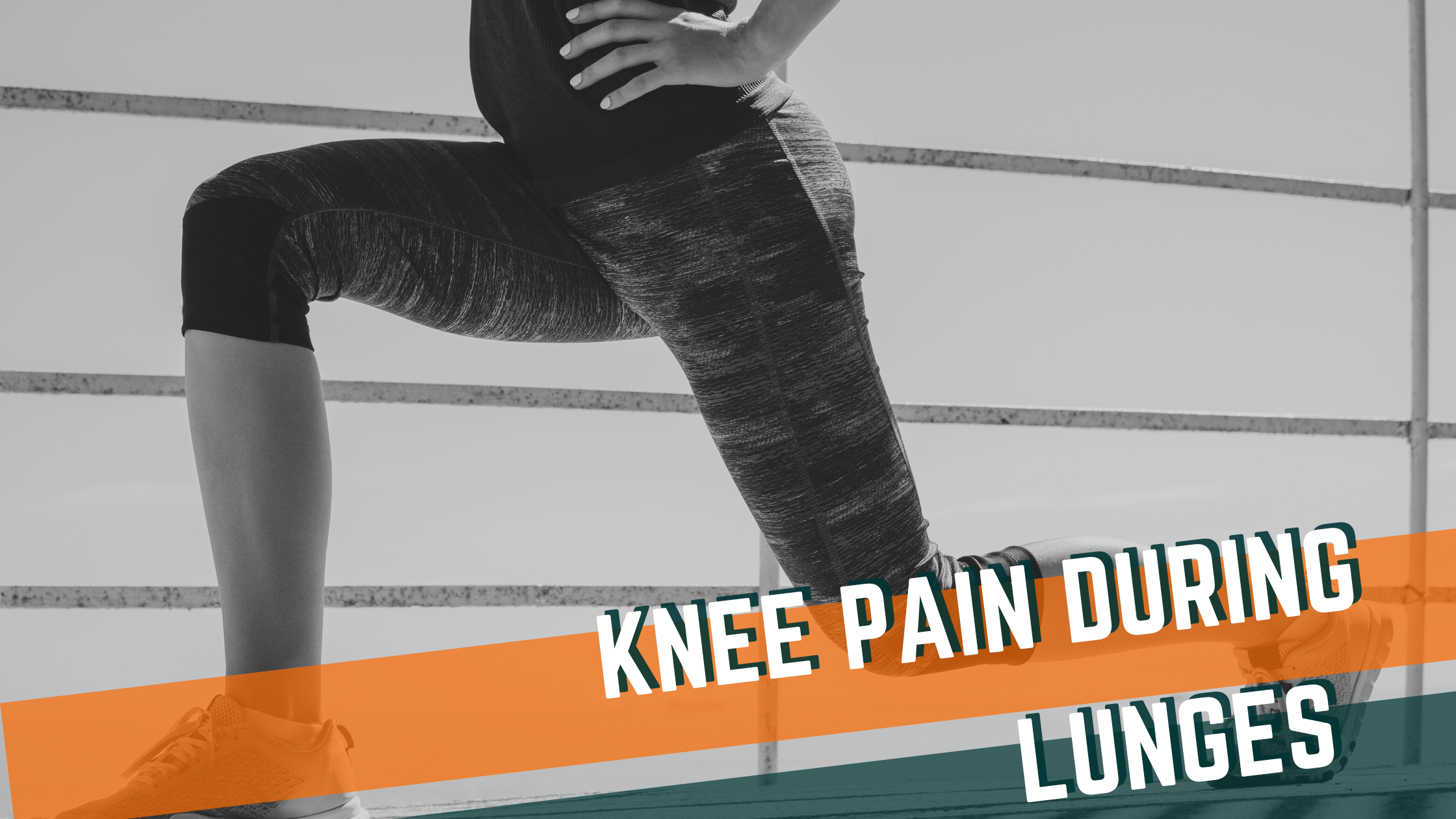
Are you experiencing discomfort and knee pain during lunges? We can help.
Many athletes struggle with knee pain during lunges. If you’re tired of having to skip or scale workouts because lunges are causing too much pain, we’ve got you covered. Check out 3 common lunge form corrections that will stress your knees less and reduce the amount of pain you’re experiencing during lunges and other exercise.
Knee Pain During Lunges Fix #1 – Correct Your Weight Distribution
Commonly, we see athletes distributing their weight during the lunge inefficiently. This can lead to deficits in performance and pain in the front of the knee while doing lunges. Distributing excessive force on the front forefoot (see #1 & 3) without equal distribution through the heel, big toe, and lateral aspect of the foot (see #1, 2, 3) can create excessive forward translation across the front part of the knee. This can create that nagging pain along the knee cap!
We also see athletes perform the lunge with too narrow of a stance width or stride length. This decreases the individual’s base of support, which may be too challenging for the athlete that does not regularly train this sort of lunge pattern or does not have adequate mobility to support it. Just like a squat, there is no “one box fits all” squat stance. Finding your individual and most optimal lunge position can lead to improving your performance gains and reduce knee pain.
Knees Caving In Causing Knee Pain During Lunges
When we see an individual’s knee translate inward during functional movement patterns, we call this dynamic knee valgus. This can be indicative of several factors:
Weakness of the lateral hip musculature (Check out some of our lateral hip strength exercises from our Best Hip Strength Exercises blog)
Neuromuscular control deficits. We love to address this fault using the RNT lunge and help train the athlete in understanding how to control the motion of the lunge. The athlete performs the RNT lunge by pressing out into the resistance band to counteract its inward force at the knee.
Limited Hip and/or Ankle Mobility
Limited ankle range of motion can prevent the athlete from performing the exercise appropriately, especially at the bottom of the lunge. This can cause excessive force at the knee as it has to “pick up the slack” for limited ankle mobility. All of which can lead to discomfort and pain during the lunge.
Use the following test to self-assess where your ankle range of motion currently is.
If an athlete does present with limited ankle mobility, we may have them work on different ankle mobility exercises to improve this range of motion!
Or, perhaps the individual’s mobility deficits are stemming from their hip. One of our powerhouse muscle groups that crosses the hip also crosses the knee joint. If this muscle has flexibility issues, it can create increased compression across the knee joint as it tries to lengthen during the lunge. We may have the individual perform on or both of the following:
Hip Eccentrics – Load up your hip flexors with this effective hip flexor eccentric exercise. Tendons and muscles love load to lock in mobility changes and improve strength performance.
Ready to finally knock this knee pain during lunges out and receive your individualized assessment?
Our team of fitness forward individuals across the country is here to help you get back to the activities you love without pain!
Recent Articles
Achilles Tendonitis: Diagnosis & Treatment
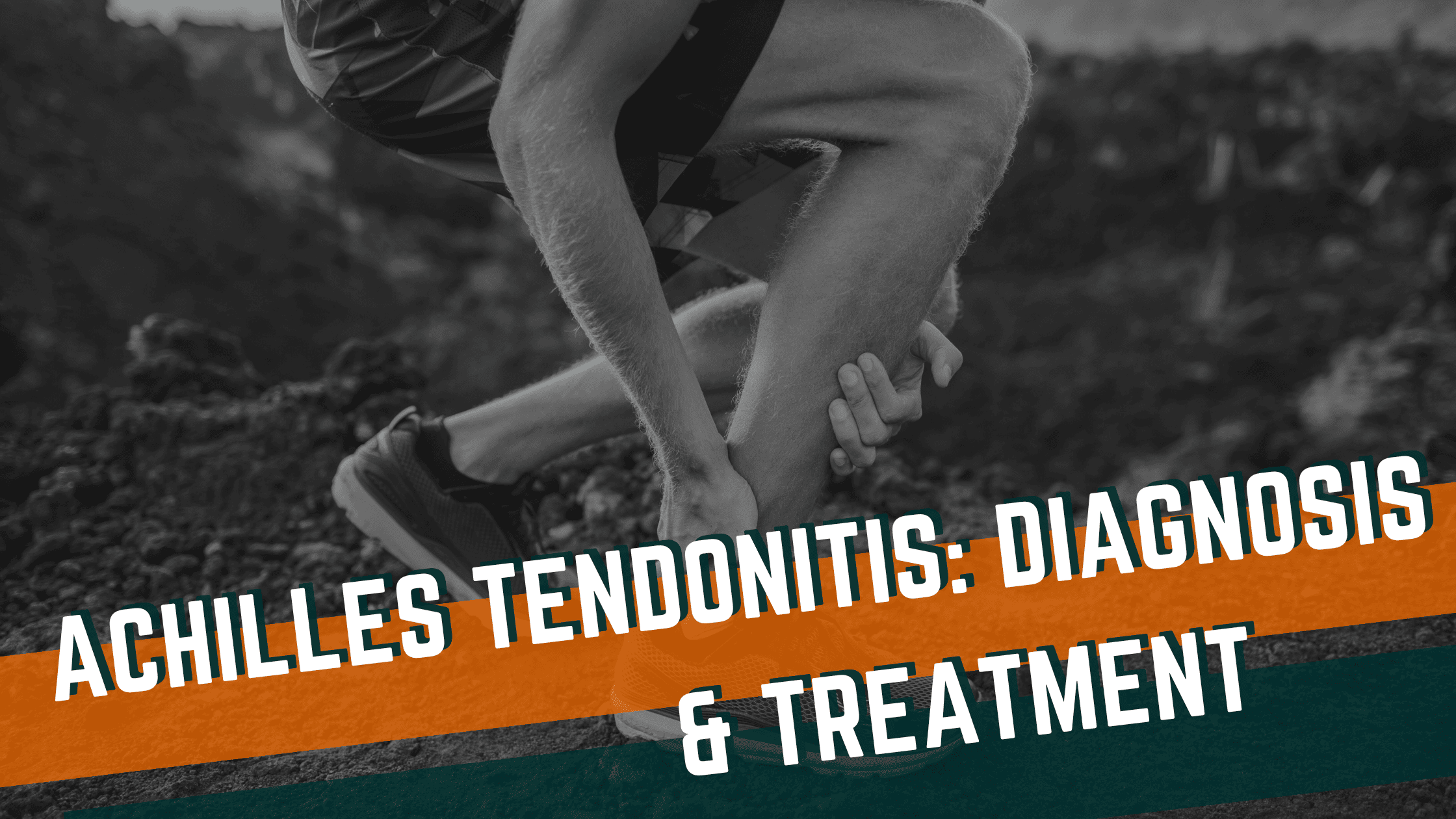
Hip Pain in Runners
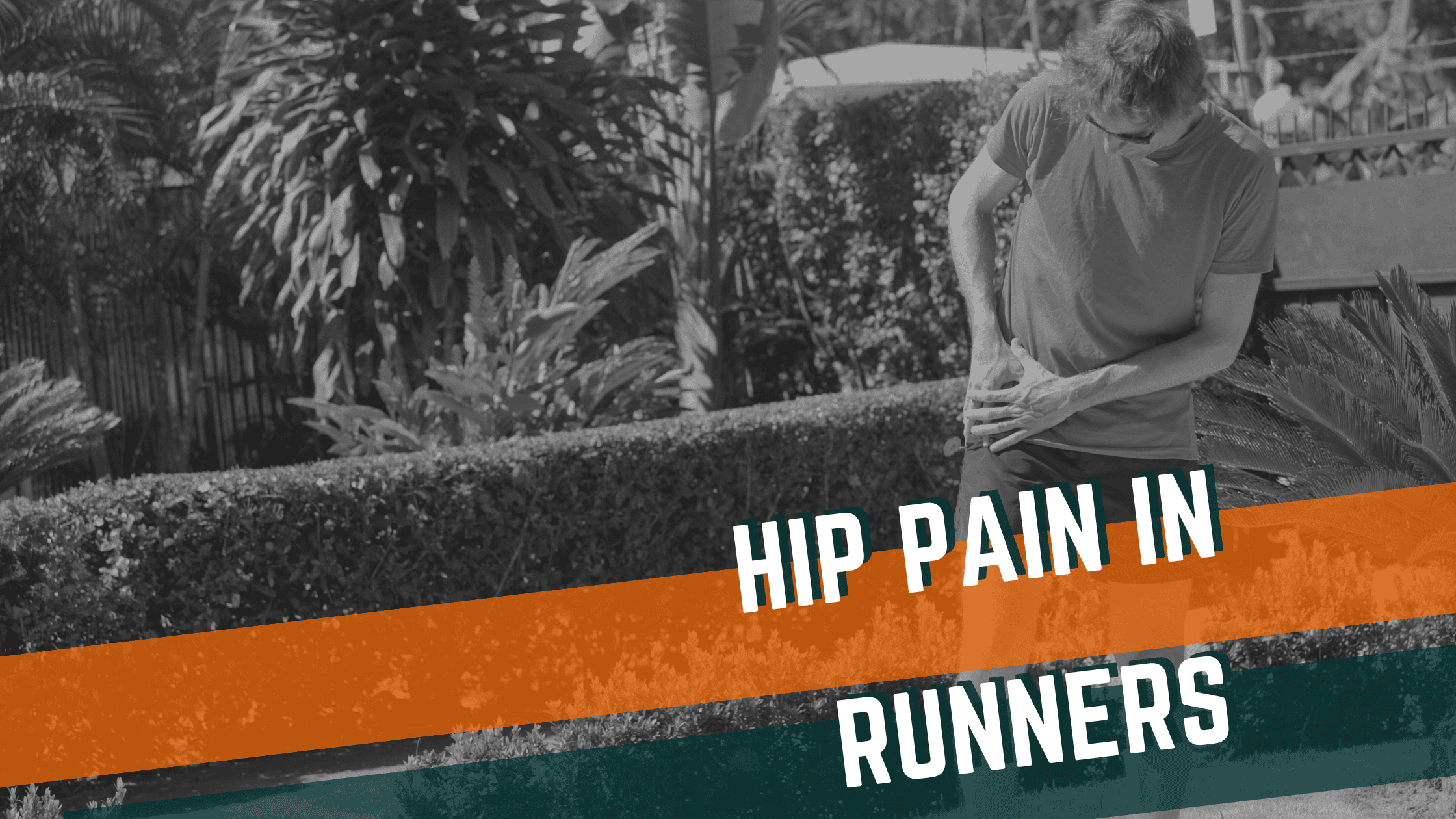
A Guide to Conditions Treated with Dry Needling
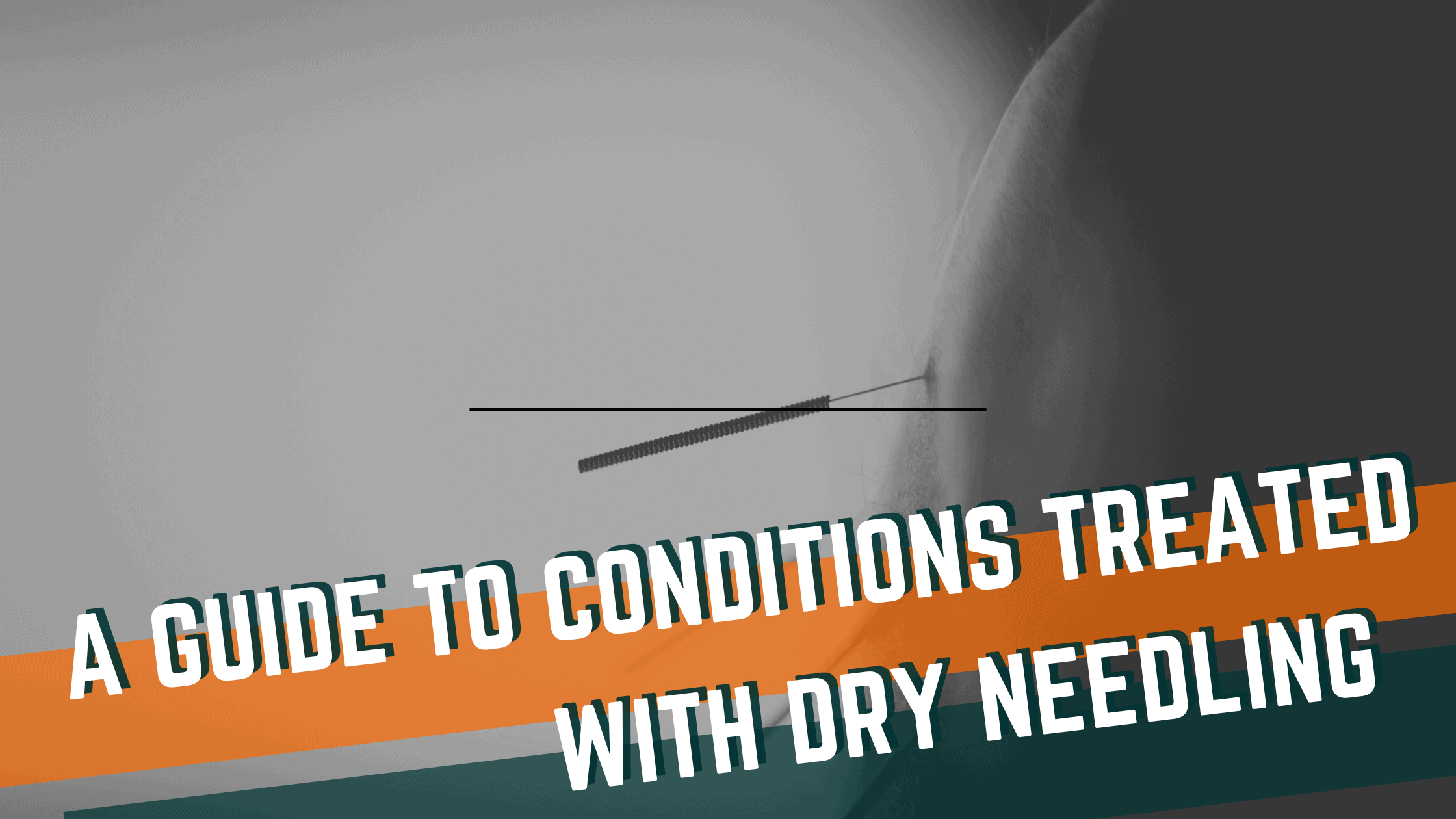
Reconnect to the CORE Postpartum: Pelvic Floor Exercises for Postpartum Healing
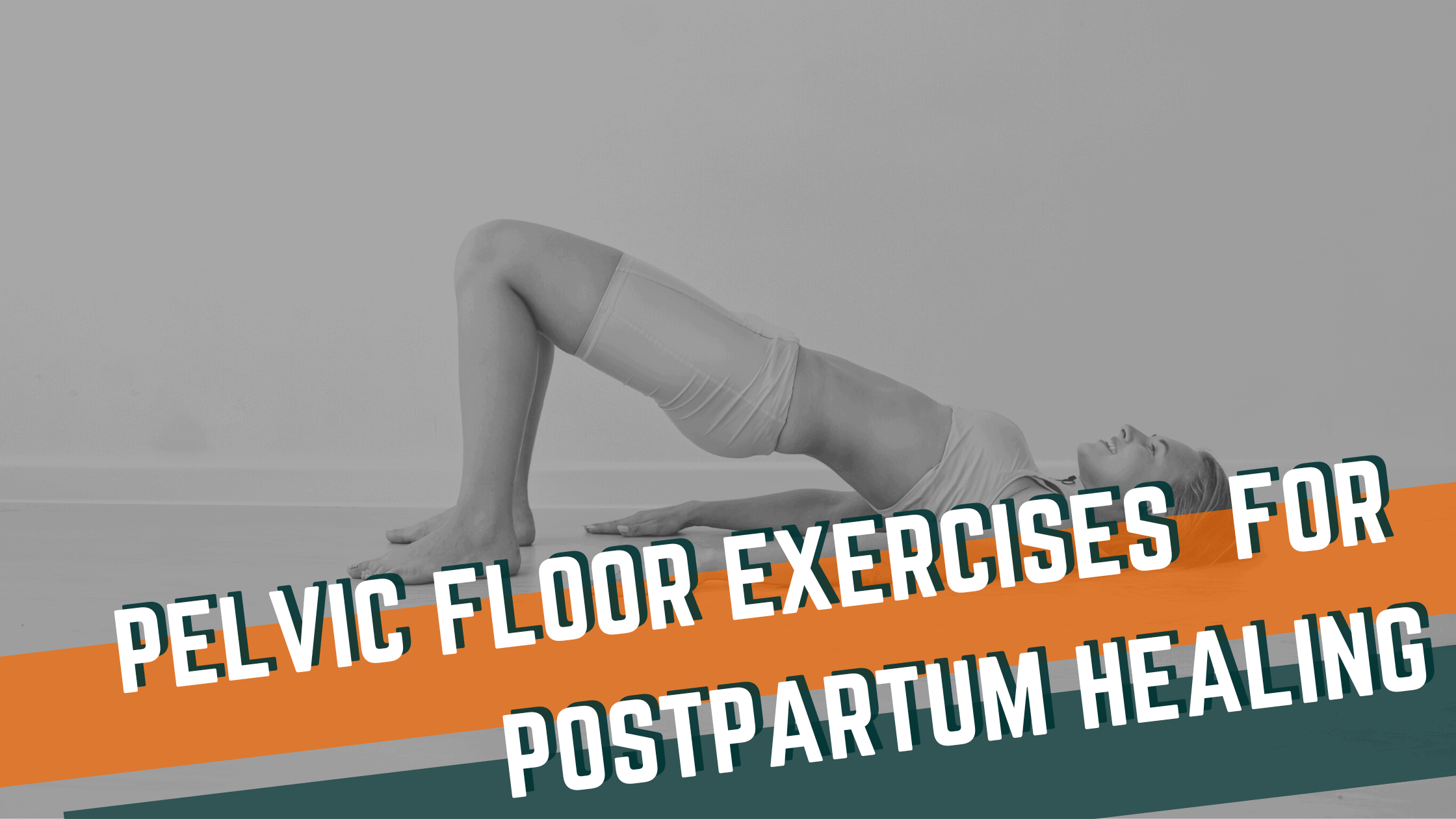
Preventing Back Pain in CrossFit: Key Considerations for Training Safely


